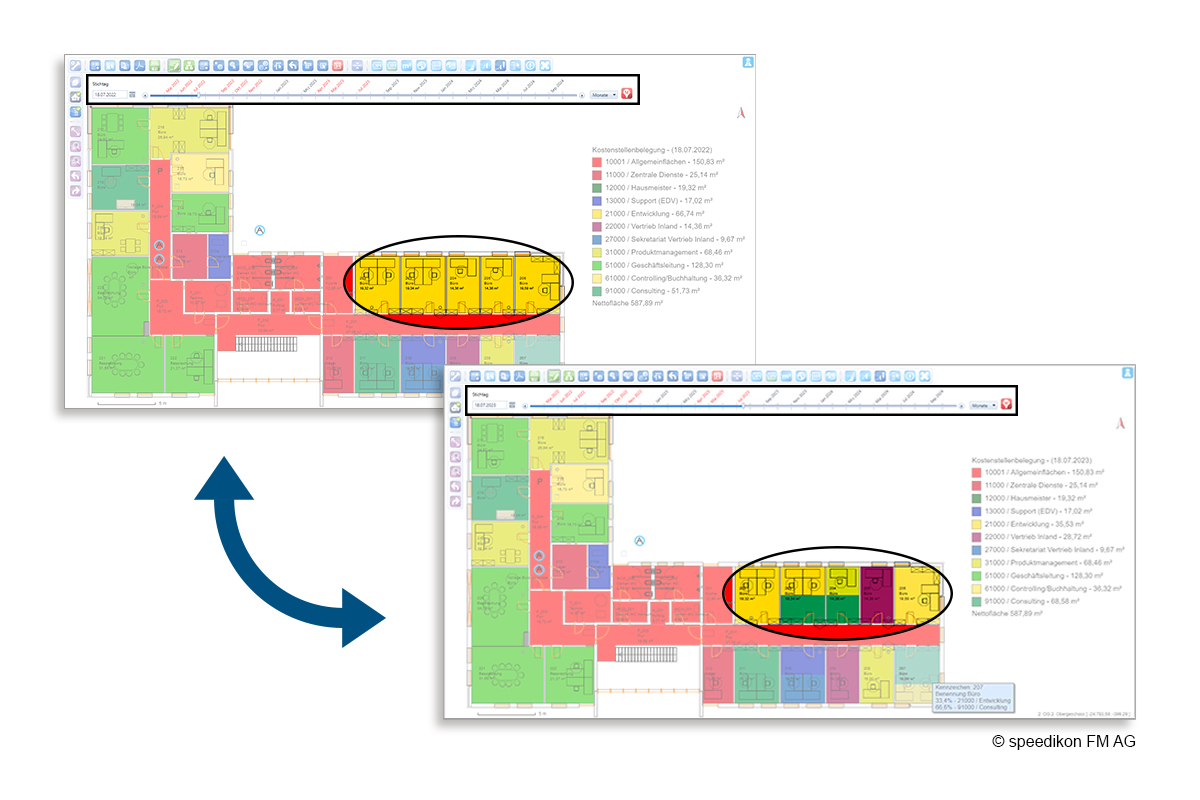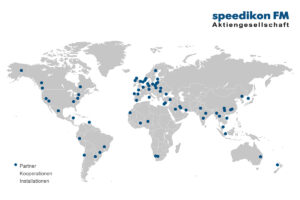What did it actually look like before modernisation? Questions like this crop up again and again in modern facilities management. What helps then is a reliable history that can show exactly what was when and how based on older data. Only then is it possible to accurately analyse and make a valid comparison based on previous conditions, which facilitates sustainable planning for future goals.
Time-based data visualisation
A time machine is required to display the exact image of a property on a specific date in the past. It allows any point in time in the life cycle of a property to be called up directly including all associated objects, floor plans and graphical representations. If the time machine is conveniently designed, an intuitive time slider can be used to compare states without having to resort to external backups or manual versioning. This increases the speed of work because the required information is immediately available.
Versioning through validity periods
Instead of overwriting data, such a time machine works with temporarily valid data objects. Changes are given a start date and remain invisible until this date is reached. This method enables forward-looking planning, for example for conversions or changes of use, and ensures that all changes remain traceable and documented.
The background to this is that the time machine historicises each data set and the associated graphic, the relationships between objects and the characteristics, i.e. a complex structure instead of a singular snapshot. As it keeps a separate start and end date for each object, it can easily reconstruct the valid links at a point in time X from the matrix of dates in a way that is easy on memory and performance.
Audit-proof integration of external data sources
Another technical advantage is that a time machine can also be used to archive data from external systems. This allows external information to be stored inside the system in a structured and long-term manner, completely audit-proof and retrievable at any time.
Direct comparison instead of external versioning
In contrast to simple CAFM systems that work with external mechanisms for versioning content, a CAFM system with a time machine allows the direct comparison of historical statuses within the inventory data structure. This makes it easier to analyse changes over time, for example in terms of space utilisation or room occupancy.
Efficient evaluations for facility managers
In particular, the time machine offers facilities managers real added value for their daily work: time-related evaluations such as those on cost centre occupancy can be carried out in a targeted manner. This allows developments to be tracked and well-founded decisions to be made for the future for example, by comparing room occupancy on 18 May 2025 with occupancy on the same day in the previous year.
Strategic tool for data-driven FM
There is no question that a time machine is a strategic tool for data-driven facilities management. It combines the past, present and future in a consistent data model that holds all information ever entered in relation to time. On this basis, it enables precise, audit-proof and planning-orientated management of complex building structures. This keeps facilities management efficient and transparent at the same time.
Image: speedikon FM AG




